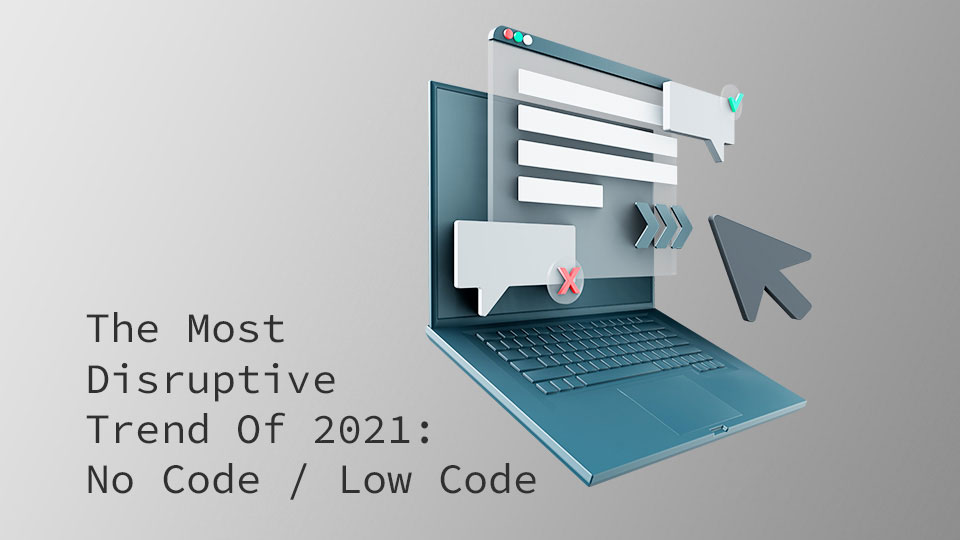The Most Disruptive Trend Of 2021: No Code / Low Code

Endless Adventures Inc. starts operations in Colombia
September 15, 2021
Interview with Endless Adventures Inc. CEO, Jordan Weisman
February 4, 2022As directors look to the future, we know one of the most important initiatives is the need to tech-enable and digitize our company’s products and service offerings. An important lesson of the 2020 global pandemic is that companies across most sectors of the economy that offered a competitive product with a good digital experience survived and, in many cases, thrived while their competitors simply underperformed or failed. This, for many of us, is a call to action to strategically review how our respective companies are positioned for digitizing offerings around the customer experience.
At the heart of digital transformation is software and our understanding of modern software needs to be clear if we are to truly provide thoughtful advice and governance to our respective companies as they embrace inherent changes to the way people work, live, buy, and experience products and services.
The software industry has changed significantly over the past decade in 3 important ways-
1. Embedded: software is making wholesale changes and reinventing how traditional industries like financial services worked. Arguably, most modern successful businesses like Tesla, Peloton, Amazon, and Chipotle are examples where software is at the core part of the business and has fundamentally shifted the customer experience.
2. Velocity: The speed at which new software and capabilities can be introduced into the mainstream have accelerated at an incredible pace. Gone are the days of waiting years or months for the next version of software where old methodologies like “waterfall” once prevailed. Today, net new features can drop in weeks or days in modern “agile” systems for creating software.
3. Cost: the cost to develop software has shrunk dramatically as quantity supplied in terms of software developers globally have reduced the marginal cost of code at a incredible pace supported by innovations in the cloud where new software can be deployed in minutes from anywhere in the world (due to new capabilities like no code / low code).
The current really important key trend that I believe is here now and will significantly change the product development landscape is a new paradigm called the “no code / low code” era.
The essence of low code and no code software is the emergence of a new class of software ‘assemblers’ not traditional software ‘developers’. The software assembler is a “citizen developer” which essentially means that with minimum to no coding training a technically astute person can create new software capabilities which can help speed-up the overall digital transformation initiatives.
So, what exactly is enabling low code or no code capability in the market today? It has to do with a concept called “abstraction” which in plain terms is the movement of low-level code taking it up a level such that they can be assembled as opposed being written from scratch. Think of abstraction as Lego blocks that are connected to make an object versus fabricating everything from scratch. Some relatable examples of low code and no code software are:
· a user, not a developer, might add a new screen with custom fields in Salesforce without writing code that helps with qualifying leads
· a customer service manager who wants to add a new priority for service tickets called “urgent” can do so without writing code
· an HR/IT user can create a new app for employees to view their benefits election without writing new code
· a marketer might click on a link in Constant Contact to create a new segment of customers to target with a product, message, and offer
Abstraction has permeated across a plethora of new and existing tools and platforms. This has also resulted in enabling the citizen developer by abstracting away the need to write intensive code. Today, implementing creative solutions with software for every employee is easier than ever before as abstraction has fundamentally unlocked the need to write traditional low level code. The fundamental notion of abstraction is an accepted constant in the evolution of software development.
The unique thing about these no code/low code platforms is that they take the place of a significant amount of the hand coding that consumes an engineer’s time.
The promise of no code enables the so called “citizen developers” or in-house employees to innovate and develop software products in weeks not months. Equally important is that citizen engineers can rapidly refine the product as it is introduced into the market, to more accurately meet the end users desired functionality.
No code allows an automation layer to compress the time and accelerate the ability to build software up to 100x faster than currently available.
These platforms are based on the newest architecture with autoscaling resilience containerization like Kubernetes, Docker, Linux and run on standard cloud platforms AWS and Microsoft Azure similar to what any large enterprise software development team would be using as its architecture.
Some examples of leading no code / low code platform companies include OutSystems, Unqork, AirTable, Mendix, and Quickbase.
Last year at Microsoft’s Ignite conference CEO Satya Nadella acknowledged that companies will be developing software in house. Ten years ago, Microsoft would be expecting to sell companies their software and not publicly embrace a corporations internal software development at scale.
These no code / low code capabilities are the pre curser to the fact that in 3-5 years as much as 65% of development will be done in house using no code low code which are complimented by AI software bots (robots), per Gartner.
We have seen various accelerants to product development in the area of artificial intelligence and machine learning and software analytics targeting companies at the functional or developmental level i.e. a sales team working with analytic software to drive insights on their prospective customer base.
Currently, no code/low code platforms/systems are already using AI bots for validating software code and automating testing functions freeing up corporate R&D teams to have more developers available for key functional requirements.
As your boards’ discuss the tech enablement of your company’s product or service it will be increasingly important for the Board to understand in layman’s terms about these critical capabilities that will speed up software development using techniques with no code / low code development as the “next generation” after agile.
In addition, I suggest ensuring your board’s understanding of digital transformation and how low code / now code, along with AI/ML, and modern analytics like Data Lakes to drive actionable business insights will be key to your company staying contemporary and competitive. One approach is to add new tech savvy digital directors or bring in external presenters to educate the board. This is an important trend I suggest boards take a look at going forward in the coming year.
Welcome to WordPress. This is your first post. Edit or delete it, then start writing!



